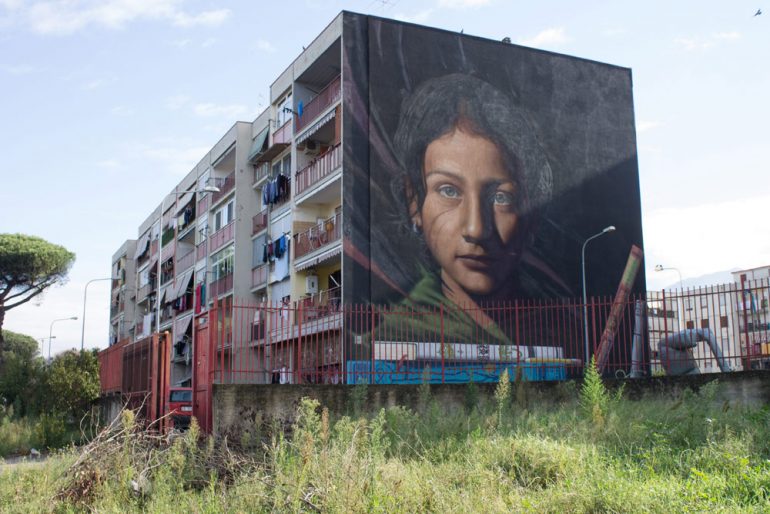by Beatrice Bruni
_
Photolux has always had a social vocation that is expressed in projects for the development of the visual arts.
The project “Scatta la notizia” [Shot the news] has had as its protagonists the students of two high schools in the Neapolitan territory, assisted by two exceptional teachers. For two years Photolux, with the support of Canon Italia and the collaboration of Neapolis.Art, has brought two great photographers, both winners of the World Press Photo, to accompany the kids in the world of visual communication.
We interviewed Pietro Masturzo, tutor of the first workshop “Scatta la notizia”, which was held at the I.S.I.S. Rosario Livatino of San Giovanni a Teduccio, a high school in the Naples area, and Antonio Gibotta, tutor in the second year, at the Istituto Superiore Francesco Morano di Caivano, also in the province of Naples. The work of the kids with Antonio was returned in an exhibition, during Photolux Festival 2018, at the Palazzo Ducale in Lucca.
Here’s what the two photographers told us.
What were the tips and teachings you gave to the guys for the photographic work produced under your guidance?
P: Initially I focused on the basic technical aspects and the use of the reflex camera, but only giving the basics, since it was not the time nor the place to investigate these issues. In fact, I was much more interested in teaching a critical use of the vehicle in order to tell something. This was very important to me because the kids were called to tell the stories their own places.
A: My workshops always start with a premise, I always put my hands forward saying that I have no presumption of teaching anything to anyone. The approach with these students was not very different; I simply joined them first of all to try and put them at ease and I explained the importance of light, a fundamental condition for good photography. I then tried to show how important it is to have a non-invasive impact towards the scene that one is going to shoot. A photojournalist must be discreet, almost invisible, but at the same time, tenacious and determined.
What do you think is the meaning of telling someone’s own territory for a group of high school students, especially in this case, where social disadvantage is more perceptible than elsewhere? Can you identify a project mission?
P: I wanted the students to understand how important it is to depict the place where they belong, an abused place, and to succeed in repossessing it and giving back its dignity, as the area is often known only for its social issues. I invited them to look, not just to see. I asked to identify their true interests, ask questions and develop them through photography. Some have focused on places, others on people who live there, others on degradation, but all have fully grasped the spirit with which I had invited them to photograph.
A: Describing a difficult territory as the one sadly known as ‘Land of the fires’ is a delicate task. We risk to fall into the obvious, banal and pathetic. The intent, however, this time, was to tell a different reality. The message we have tried to convey is a message of hope. I hope I was able to instil these young students not only the passion for photography, but also the desire to redeem and tell their land in a different way from what, unfortunately, we are used to reading
What would you suggest now to the guys you have accompanied through the “Scatta la notizia” experience? How could they make it even more profitable in the future? Are there new young talents in the world of photojournalism?
P: This experience, in the results, has gone beyond my expectations. After an editing done in the classroom, and a further editing done by me to even out the work, we produced an exhibition, which was obviously hosted also in Lucca [during the 2017 Biennale]. I would like this work not to end here, for the territory and for the kids, and I would like to make a small publication, to remember what it was done. I do not know if any of the participants will become a photographer, but I hope to have left at least a seed in each of them. The emotions that experiences like this leave are beautiful: I feel the happiness of having done something good, of having been of use. This goes beyond the fact that the workshop has brought them some professional knowledge. I want them to retain the idea that photography can be a diary, to be used as desired, that they understand its importance as a method of understanding reality. Photolux and Canon Italia have the great merit of being photographic culture bearers in schools. In conclusion, I wish Photolux will continue with this noble attempt, and will always pursue the teaching of visual culture by nurturing young minds.
A: Among the students there were some who were particularly inclined to use photography as a means of expression. Their shots were distinguished by the excellent composition. I hope this experience does not remain an isolated case and that in some of them this marvellous passion finds fertile ground
December 7, 2018




